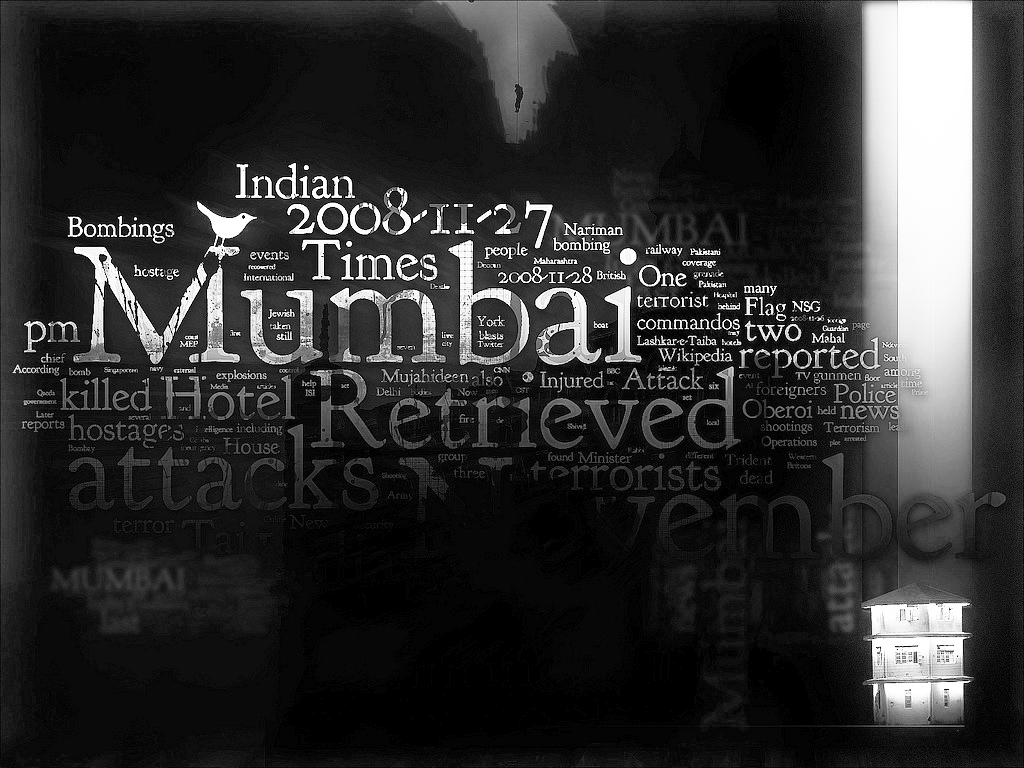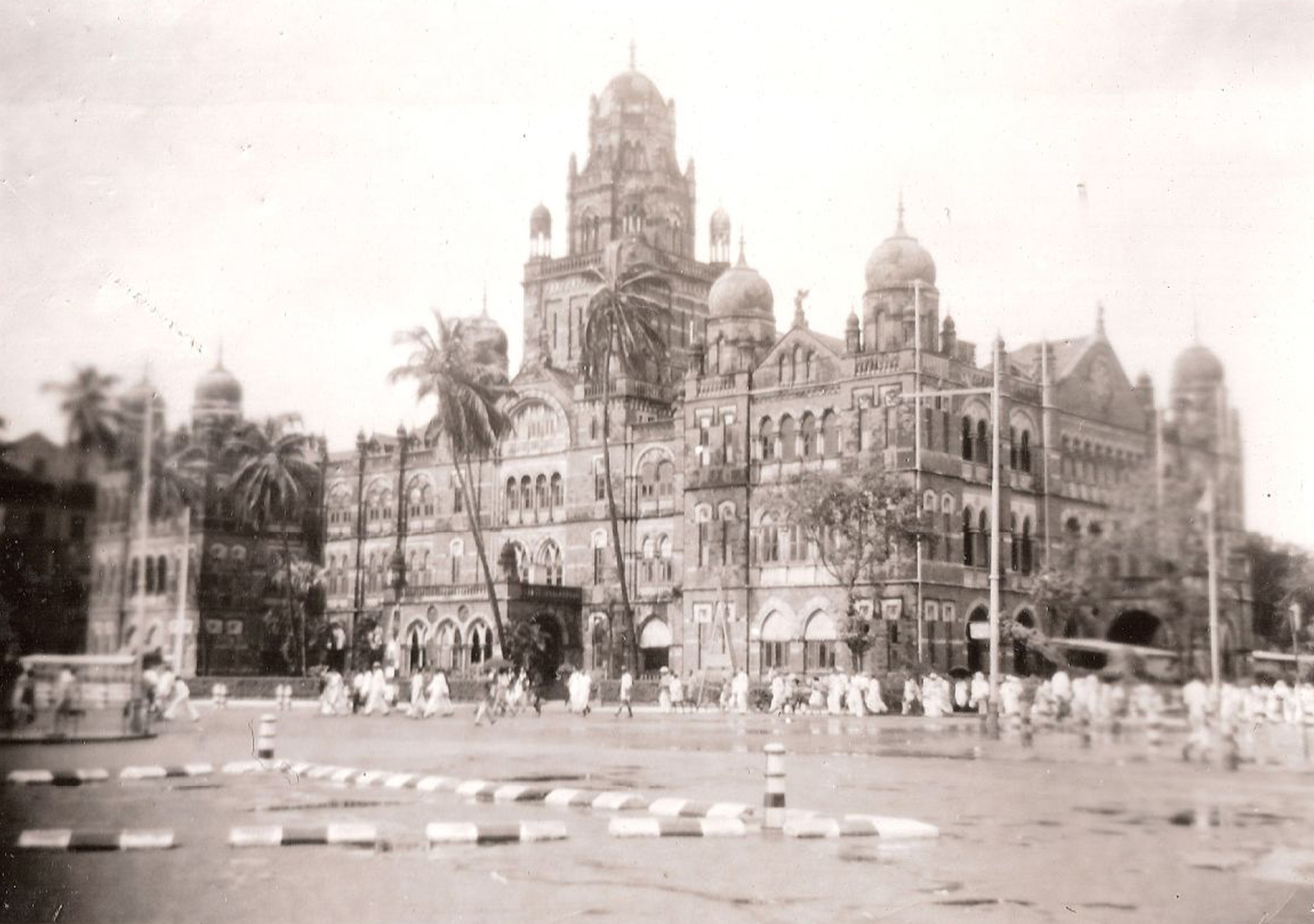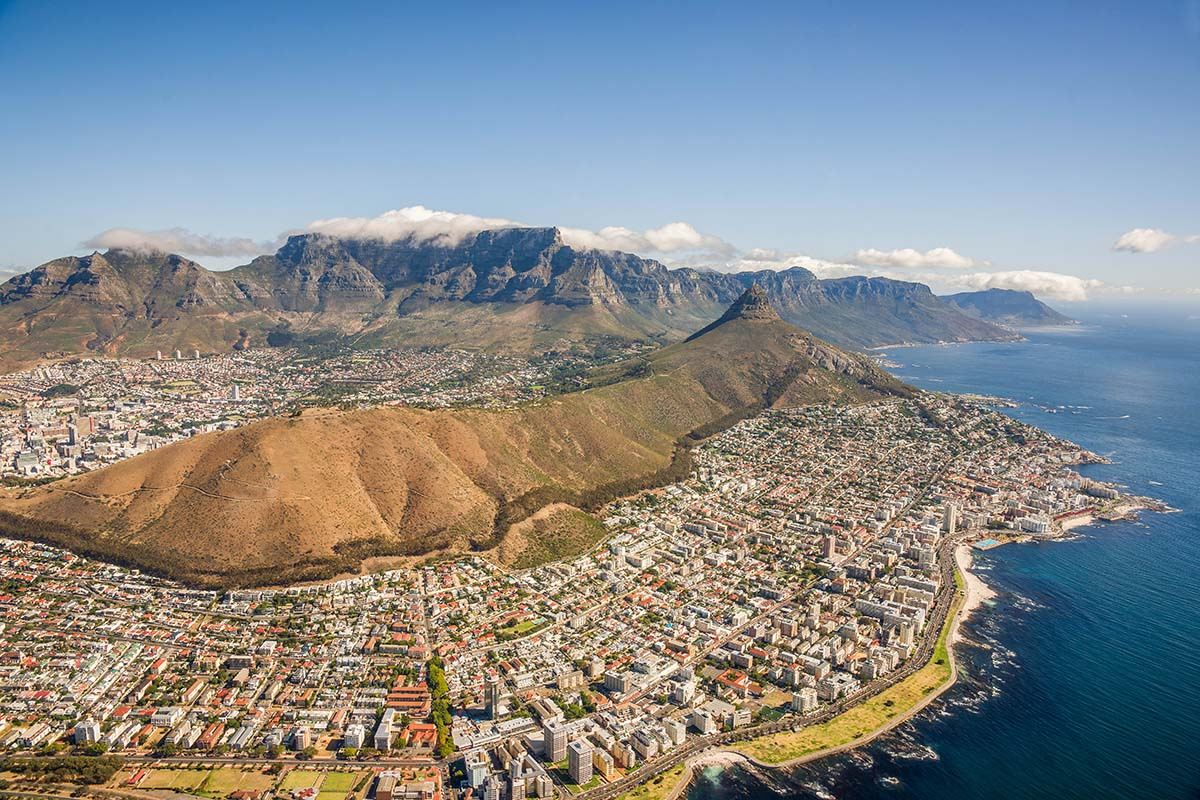The recent bombings in Mumbai, which killed 26 people and injured 130 more, are a grim reminder of how far Indian security has yet to go in effectively maintaining order and eradicating terrorism within its own borders.i Such occurrences threaten India’s stability at a time when it is hoping to establish itself as a leading power in the global hierarchy.ii Even as India has seen a steady reduction in the number of deaths from terrorist attacks since 2006, the United States, a country that India hopes to emulate, has been far more successful in controlling domestic terrorism.iii Data shows that in 2010 nearly 2000 people died from India’s 700 terrorist incidents as opposed to just three deaths in the United States resulting from ten attacks.iv First, the systemic conditions which give rise to Indian terrorism will be examined, followed by an analysis of how India’s counter-terrorism policies compare to those of the United States, the latter of which has been far more effective in preventing terror attacks.
Corruption within the Indian government and its police severely hampers the ability of Indian security forces to prevent attacks and dismantle terrorist operations within the country.v Indian police officers are notorious for taking and forcing bribes while their ranks are often infiltrated by criminal and terrorist networks.vi Prime Minister Manmohan Singh’s administration has been no different than that of his predecessors in dealing with corruption, recently coming off of a so-called “season of scams”. During this time the administration allegedly stole $8 billion in revenues from the 2010 Commonwealth Games, over $40 billion stolen in the state of Uttar Pradesh from schemes subsidizing food and fuel, and another $40 billion lost from the sale of crooked 2G telecom licenses.vii The problem is so endemic that 28 percent of the sitting members in the Lok Sabha, India’s lower house of parliament, are facing criminal charges or inquiries for corruption, while the man responsible for addressing governmental corruption, Chief Vigilance Commissioner of India P.J. Thomas, was recently ousted based on allegations stemming from corruption.viii As such, no significant improvements in security can be made until the government begins to implement effective anti-corruption legislation in order to deal with this graft.

Along with corruption, poverty stands out as the other factor which fuels terrorism in India. According to the World Bank, 37.2 percent of the country’s 1.2 billion people live under the internationally set poverty line of $1.25 per day.ix The country suffers from a low overall literacy rate of 61 percent, while the average duration of schooling is 10 years.x India is also at a high risk for diseases, especially in the rural parts of the country as well as the slums of urban areas.xi Although a study by terrorism expert and University of North Carolina at Charlotte professor James A. Piazza shows that there is no direct correlation between poverty and terrorism, the reality of Indian terrorism is that the successful organizations primarily draw upon the impoverished base for recruitment as these groups have often been alienated by both society and the Indian government.xi Poverty, though not an explicit indicator of terrorism, certainly gives radicals a means to both operate and recruit for their organizations, which would explain the successes of the two largest perpetrators of terrorist attacks in India: radical Jihadists and the Naxalites, a radical Maoist terrorist movement.
India is home to the world’s third largest Muslim population, a staggering statistic seeing as Hindus are the major religious group and make up 80.5 percent of the country’s population while Muslims only account for 13.4 percent, a third of whom live in extreme poverty.xii Though the presence of Islam by no means implies Jihadist violence, the alarming number of politically motivated Islamic extremists who feed off of a poverty-stricken base make India more susceptible to terrorism than the United States, which lacks the aforementioned precursors. Attacks from radical insurgents occur regularly in the northernmost Indian-administered state of Jammu and Kashmir, mainly from the Pakistani-based organizations Harakut ul-Mujahideen, responsible for hijackings and attacks against India’s civilians and military in Kashmir, Jaish-e-Mohammed, a group which has openly declared war against the United States, and Lakshar-e-Taiba, the organization responsible for the 2006 commuter rail bombings in Mumbai and the 2008 Mumbai attacks.xiii As for the recent attacks in Mumbai, it is speculated that the Indian Mujahideen, an extremist group akin to the Taliban, may have been involved; the group regularly plans attacks on the 13th or 26th of the month and perpetrated the 2010 attacks on the Hindu holy city of Varanasi.xiv Authorities have not ruled out involvement on the part of the Mumbai criminal underworld either, and it is possible that the attacks may have been carried out by D-Company, a Mumbai crime syndicate run by Dawood Ibrahim, an international fugitive and terrorist with links to Al-Qaeda likely hiding in Pakistan.xv The role of India’s neighbor in the recent attacks is unclear, although previous incidents including the 2008 Mumbai attacks in which the attackers launched from Pakistan and allegedly were supported by the Pakistani secret service (ISI), would suggest that Pakistan likely had some link to the July bombings.xvi Pakistan’s historical influence and possible involvement with Indian terrorist groups complicates matters as the Indian government is left fighting both the internal threat and the external sway of its longtime rival.
The Naxalites are violent far-left radicals who adhere to Maoism and are politically known as the Communist Party of India-Maoist or CPI-Maoist.xvii Not to be confused with the more mainstream national Left Front comprised of the Communist Party of India (CPI) and Communist Party of India-Marxist, known as CPI-Marxist, the Naxalites’ goal is to “liberate India from the clutches of imperialism and feudalism”.xviii The movement originated in West Bengal, and its influence extends across parts of east, central, and south India, forming a “Red Corridor” of Naxalite activity.xix Though the Left Front remains detached from the CPI-Maoists, its prevalence in many of the Red Corridor states has undoubtedly given life to the Naxalite movement as the group draws upon the sympathetic Marxist base to advance its own aims. Furthermore, this problem is not a recent development; the Left Front has ruled West Bengal for 34 years and at times governed the Kerala and Tripura states, and has held seats in India’s Parliament.xx Data from the National Consortium for the Study of Terrorism and Terrorist Responses showed that the Naxalites carried out over 500 terrorist attacks in India in 2010, leading Prime Minister Manmohan Singh to call the group the most serious threat to the country’s internal security.xxi The ability of the group to appeal to India’s impoverished while remaining indifferent to religion, as well as the Left Front exertion of actual political control over state and local governments, makes the threat all the more serious.
Circumstances which allow terrorism to exist in the United States are unworthy of examination as domestically bred terrorism is a minor threat to the country’s overall security. Instead, it is transnational entities like Al-Qaeda that ultimately pose the gravest danger to American security. Despite remaining in the crosshairs of most major Jihadist groups over the past decade, the United States has been extremely successful in controlling domestic terrorism with only three casualties relating to terrorism in 2010. Aside from conditions inherent to India, such as poverty and endemic corruption, the major reason why America has prevailed over terrorism while India has not is the comparative difference in the government policies towards terrorism. In essence, the United States has been far more effective in creating and enforcing policies aimed at protecting its citizens from terrorist attacks than has India. One such example is the USA PATRIOT Act passed by the American Congress in 2001 in response to the 9/11 attacks.xxii This piece of legislation was designed to prevent terrorist attacks by:
- Expanding the surveillance powers of law enforcement officials to monitor terrorist activity
- Facilitating the information and cooperation between the various American intelligence agencies by removing legal barriers
- Broadening the amount of discretion that law enforcement and immigration authorities have in detaining and deporting immigrants suspected of engaging in terrorism.xxiii
The American government likewise created the Department of Homeland Security (DHS), primarily tasked with responding to terrorist threats and eradicating domestic terrorism.xxiv Also as a direct result of the 9/11 attacks, the Transportation Security Administration or TSA, was created and charged with regulating the security of public transportation and operates under the direction of the DHS.xxv Though organizations such as the ACLU have voiced opposition to some of these initiatives, particularly the PATRIOT Act, these policies have been hugely successful in improving American security and protecting its citizens from terrorist attacks. The PATRIOT Act has vastly improved the flow of intelligence pertaining to terrorism, while the TSA has made air plane bombings and hijackings near impossible. Other steps including the creation of the House Committee on Homeland Security and the implementation of a hands-on foreign policy aimed at directly confronting terrorists through military force and international cooperation have contributed to the overall success of American efforts to disrupt terrorist networks and protect its cities.xxvi As the United States has seen fewer than 10 incidents per year since 2003, and has not been hit by a successful bombing or explosion since 9/11, it is evident that American policies towards terrorism have been successful.xxvii Indian officials should take note of the American blueprint, which involves a direct and comprehensive strategy to make the operations of terrorist groups nearly impossible.

India’s version of the PATRIOT Act, known as the Prevention of Terrorism Activities Act (PTA), was passed in 2001. This act redefined terrorism while simultaneously giving law enforcement officials greater powers, including the ability to seize property of a known terrorist groups using probable cause as a justification.xxviii The PTA was later repealed in 2004 due to unpopular provisions such as those that allowed authorities to treat confessions made to the police as admissions of guilt.xxix In the aftermath of the 2008 Mumbai attacks, it resurfaced as an amendment to the Unlawful Activities Prevention Act of 1963 (UAPA).xxx This amendment retained many of the same provisions as its predecessor by expanding the scope that authorities had to arrest suspected terrorists, and allowed for the detainment of these suspected terrorists for up to 180 days without charges.xxxi The aforementioned amendment has been central in the Indian government’s reduction of deaths stemming from terrorism, yet its legitimacy has been eroded as Indian police officers still routinely commit abuses under the auspices of the UAPA. The amendment needs mechanisms similar to those in the PATRIOT Act that facilitate cooperation amongst the intelligence community and regulate the financial transactions of terrorist groups to truly realize it’s potential.
India’s outspoken criticism of Pakistan’s support of extremist groups has been effective in garnering international attention, yet the country’s government needs to provide more concrete proof of Pakistan’s involvement in order to bring about international sanctions that could stem the flow of resources to these groups. That being said, the United States stated policy of cooperation with Pakistan in fighting terrorism, coupled with overarching fears of the collapse of the Pakistani government, will likely prevent any such sanctions from taking root. At the same time, large stretches of Indian territory in the east remain under the control of the Naxalites, a reality attributable to the failed policies of the Ministry of Home Affairs’ Department of Internal Security, the government institution bearing the closest resemblance to the American DHS. The agency’s unsuccessful enforcement of social and economic policy initiatives in the Red Corridor has undoubtedly undermined its efforts in dealing with the Naxalite insurrection and the respect for the rule of law. This remains consistent with India’s historical counter-terrorism policies in that the necessary legislation and bureaucratic agencies exist, yet they are not enforced in the affected areas due to the corrupt nature of India’s police forces.
It will be increasingly difficult for India to establish itself as a legitimate world power if it does not mimic the efforts of the American government in dealing with its domestic security woes. The government needs reforms aimed at significantly diminishing its corruption. Doing so would enhance its legitimacy, establish better rule of law, and vis-à-vis improve the countries short and long-term security situation. Additionally, long term initiatives to reduce poverty must be undertaken as failure to do so will continue to provide terrorists a recruitment base. Above all, India must improve the execution of its laws and policies to ensure that terrorist activity in the country subsides. If these improvements to Indian security are not made with due diligence, Mumbai, India’s financial and entertainment center, will likely be hit again by another major terrorist attack in the future.
__________________________________
i. “Bombings in Mumbai: Terror, Again.” Economist 14 Jul 2011: n. pag. Web. 26 Jul 2011.
ii United States. World Factbook: India. , Web. 26 Jul 2011.
iii “Bombings in Mumbai: Terror, Again.” Economist 14 Jul 2011: n. pag. Web. 26 Jul 2011.
iv United States. National Consortium for the Study of Terrorism and Terrorist Responses: Global Terrorism Database. College Park, MA: , Web. 1 Aug 2011.
v Rai, Saritha. “In India, anti-corruption all the rage.” www.globalpost.com. The Global Post, 22 Nov 2010. Web. 2 Aug 2011. http://www.globalpost.com/dispatch/india/101119/india-anti-corruption-police
vi Rai, Saritha. “In India, anti-corruption all the rage.” www.globalpost.com. The Global Post, 22 Nov 2010. Web. 2 Aug 2011. http://www.globalpost.com/dispatch/india/101119/india-anti-corruption-police
vii “The Economist.” Corruption in India: A Rotten State 10 Mar 2011: n. pag. Web. 2 Aug 2011.
viii “The Economist.” Corruption in India: A Million Rupees Now 10 Mar 2011: n. pag. Web. 2 Aug 2011.
ix “India Country Overview September 2010.” World Bank n. pag. The World Bank. Web. 26 Aug 2011.
x United States. CIA World Factbook: India. Print.
xi Piazza, James A. “Rooted in Poverty?: Terrorism, Poor Economic Development, and Social Cleavages.” Terrorism and Political Violence (2006): n. pag. Web. 12 Sep 2011.
xii United States. World Factbook: India. Print.
xiii Afridi, Jamal. “Kashmir Militant Extremists.” Council on Foreign Relations 09 Jul 2009. n. pag. Web. 12 Aug 2011.
xiv Bazar, Zaveri. “Mumbai Attacks: Indian Mujahideen Suspected Behind Mumbai Blasts.” economictimes.indiatimes.com. The Economic Times, 14 Jul 2011. Web. 12 Aug 2011.
xvi “Profile: India’s Fugitive Gangster.” BBC News: South Asia. N.p., 12 Sep 2006. Web. 12 Aug 2011.
xvi Afridi, Jamal. “Kashmir Militant Extremists.” Council on Foreign Relations 09 Jul 2009. n. pag. Web. 12 Aug 2011.
xvii “India’s Naxalites: A spectre haunting India.” Economist 17 Aug 2006: n. pag. Web. 12 Aug 2011.
xviii “India’s Naxalites: A spectre haunting India.” Economist 17 Aug 2006: n. pag. Web. 12 Aug 2011.
xix “India’s Naxalites: A spectre haunting India.” Economist 17 Aug 2006: n. pag. Web. 12 Aug 2011. <http://www.economist.com/node/7799247>.
xx “India’s Naxalites: A spectre haunting India.” Economist 17 Aug 2006: n. pag. Web. 12 Aug 2011. <http://www.economist.com/node/7799247>.
xxi United States. National Consortium for the Study of Terrorism and Terrorist Responses: Global Terrorism Database. College Park, MA: , Web. 1 Aug 2011.
xxii United States. USA PATRIOT Act. , 2001. Web. 27 Aug 2011.
xxiii United States. USA PATRIOT Act. , 2001. Web. 27 Aug 2011.
xxiv United States. , Web. 27 Aug 2011.
xxv United States. , Web. 27 Aug 2011.
xxvi United States. , Web. 27 Aug 2011.
xxvii “United States.” National Consortium for the Study of Terrorism and the Responses to Terrorism n. pag. Global Terror Database. Web. 28 Aug 2011.
xxviii Devraj, Ranjit. “India’s ‘PATRIOT Act’ Repealed.” antiwar.com. antiwar.com, 19 Sep 2004. Web. 28 Aug 2011.
xxix Devraj, Ranjit. “India’s ‘PATRIOT Act’ Repealed.” antiwar.com. antiwar.com, 19 Sep 2004. Web. 28 Aug 2011.
xxx Nair, Ravi. “The Unlawful Activities (Prevention) Amendment Act 2008: Repeating Past Mistakes.” South Asian Citizens Web. N.p., n.d. Web. 28 Aug 2011.
xxxi Nair, Ravi. “The Unlawful Activities (Prevention) Amendment Act 2008: Repeating Past Mistakes.” South Asian Citizens Web. N.p., n.d. Web. 28 Aug 2011.


